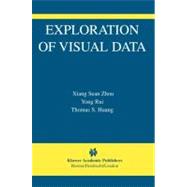
What is included with this book?
| 1. INTRODUCTION | 1 | (4) | |||
|
1 | (1) | |||
|
2 | (1) | |||
|
2 | (2) | |||
|
2 | (1) | |||
|
3 | (1) | |||
|
3 | (1) | |||
|
3 | (1) | |||
|
4 | (1) | |||
| 2. OVERVIEW OF VISUAL INFORMATION REPRESENTATION | 5 | (10) | |||
|
6 | (1) | |||
|
7 | (1) | |||
|
8 | (2) | |||
|
10 | (1) | |||
|
11 | (1) | |||
|
12 | (1) | |||
|
13 | (2) | |||
| 3. EDGE-BASED STRUCTURAL FEATURES | 15 | (24) | |||
|
15 | (2) | |||
|
16 | (1) | |||
|
16 | (1) | |||
|
16 | (1) | |||
|
17 | (7) | |||
|
18 | (2) | |||
|
20 | (4) | |||
|
24 | (1) | |||
|
24 | (15) | |||
|
25 | (2) | |||
|
27 | (2) | |||
|
29 | (6) | |||
|
35 | (1) | |||
|
35 | (1) | |||
|
36 | (3) | |||
| 4. PROBABILISTIC LOCAL STRUCTURE MODELS | 39 | (14) | |||
|
39 | (1) | |||
|
40 | (4) | |||
|
41 | (1) | |||
|
41 | (1) | |||
|
42 | (1) | |||
|
43 | (1) | |||
|
44 | (1) | |||
|
44 | (7) | |||
|
44 | (5) | |||
|
49 | (2) | |||
|
51 | (2) | |||
| 5. CONSTRUCTING TABLE-OF-CONTENT FOR VIDEOS | 53 | (22) | |||
|
53 | (3) | |||
|
56 | (2) | |||
|
56 | (1) | |||
|
57 | (1) | |||
|
57 | (1) | |||
|
58 | (9) | |||
|
59 | (1) | |||
|
59 | (1) | |||
|
60 | (2) | |||
|
62 | (5) | |||
|
67 | (3) | |||
|
68 | (1) | |||
|
69 | (1) | |||
|
69 | (1) | |||
|
70 | (2) | |||
|
72 | (3) | |||
| 6. NONLINEARLY SAMPLED VIDEO STREAMING | 75 | (22) | |||
|
76 | (2) | |||
|
78 | (1) | |||
|
79 | (1) | |||
|
80 | (1) | |||
|
81 | (4) | |||
|
82 | (1) | |||
|
82 | (1) | |||
|
83 | (2) | |||
|
85 | (2) | |||
|
85 | (1) | |||
|
86 | (1) | |||
|
87 | (1) | |||
|
87 | (5) | |||
|
87 | (2) | |||
|
89 | (1) | |||
|
90 | (1) | |||
|
91 | (1) | |||
|
91 | (1) | |||
|
92 | (1) | |||
|
92 | (2) | |||
|
94 | (3) | |||
| 7. RELEVANCE FEEDBACK FOR VISUAL DATA RETRIEVAL | 97 | (52) | |||
|
98 | (1) | |||
|
99 | (1) | |||
|
100 | (4) | |||
|
100 | (2) | |||
|
102 | (2) | |||
|
104 | (15) | |||
|
105 | (2) | |||
|
107 | (2) | |||
|
109 | (4) | |||
|
113 | (6) | |||
|
119 | (1) | |||
|
119 | (3) | |||
|
120 | (1) | |||
|
121 | (1) | |||
|
121 | (1) | |||
|
122 | (1) | |||
|
122 | (5) | |||
|
122 | (1) | |||
|
123 | (1) | |||
|
123 | (1) | |||
|
124 | (1) | |||
|
125 | (1) | |||
|
125 | (2) | |||
|
127 | (8) | |||
|
127 | (2) | |||
|
129 | (6) | |||
|
135 | (10) | |||
|
136 | (4) | |||
|
140 | (3) | |||
|
143 | (2) | |||
|
145 | (4) | |||
| 8. TOWARD UNIFICATION OF KEYWORDS AND LOWLEVEL CONTENTS | 149 | (14) | |||
|
150 | (3) | |||
|
150 | (1) | |||
|
151 | (1) | |||
|
151 | (2) | |||
|
153 | (3) | |||
|
153 | (1) | |||
|
154 | (2) | |||
|
156 | (6) | |||
|
157 | (2) | |||
|
159 | (3) | |||
|
162 | (1) | |||
| 9. FUTURE RESEARCH DIRECTIONS | 163 | (4) | |||
|
163 | (1) | |||
|
164 | (1) | |||
|
164 | (1) | |||
|
164 | (3) | |||
| REFERENCES | 167 | (18) | |||
| INDEX | 185 |
The New copy of this book will include any supplemental materials advertised. Please check the title of the book to determine if it should include any access cards, study guides, lab manuals, CDs, etc.
The Used, Rental and eBook copies of this book are not guaranteed to include any supplemental materials. Typically, only the book itself is included. This is true even if the title states it includes any access cards, study guides, lab manuals, CDs, etc.